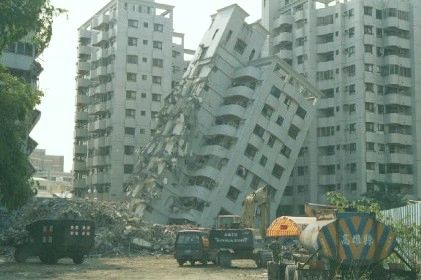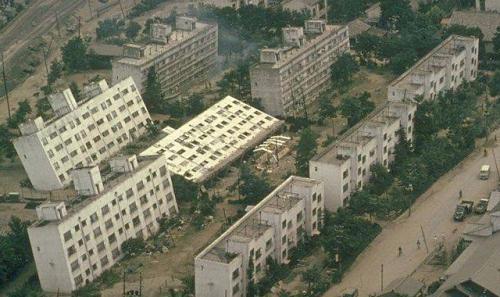درباره من
پیوندها
- انجمن زلزله ایران
- سازمان نقشه برداری کشور
- وزارت راه و شهرسازی
- مرکز تحقیقات ساختمان و مسکن
- پژوهشگاه زلزله
- معاونت برنامه ریزی و نظارت راهبردی رئیس جمهور
- آخرین زمین لرزه ها
- دانشگاه آزاد قزوین
- باشگاه پژوهشگران جوان و نخبگان
- American Concrete Institute: ACI
- American Society of Civil Engineers
- انجمن بتن ایران ICI
- انجمن سازه های فولادی ایران
- U.S. Geological Survey
- نظام مهندسی ساختمان استان قزوین
- کانون فارغ التحصیلان دانشگاه آزاد
- مرکز تحقیقات صنعت ساختمان و بتن دانشگاه آزاد قزوین
- قیمت روز مصالح ساختمانی
- سایت جامع اطلاع رسانی قیمت آهن آلات
- دفتر امور مقررات ملّی ساختمان
- سامانه عملیات الکترونیکی مالیاتی
- خبرگزاری مجلس شورای اسلامی
- سازمان هواشناسی
- نظام فنی و اجرایی کشور
- شرکت فنی و مهندسی برنا آوند سازه
- Maps of World
- شرکت تعاونی مسکن فاتحان فجر
- Center forEngineering Strong Motion Data
- Southern California Earthquake Data Center (SCECDC
- Northern California Earthquake Data Center
- مرکز لرزه نگاری ژاپن
- Kajima Builidng and Design Group
- NEHRP- New Building
- Geospatial Information Authority of Japan (GSI)
- Incorporated Research Institutions for Seismology
- Alamut sightseeing tour
برگهها
- Advanced engineering mathematical(ریاضی مهندسی )
- Reasearch Method
- What's the meaning of earthquak
- seismic design handbook .f. naim(کتاب کامل طراحی لرزه ای دکتر فرزاد نعیم)
- Civil Engineering Formulas Pocket Guide
- Dynamics of structures(دینامیک سازه چوپرا-کلاف)
- Principles of SOIL DYNAMICS(دینامیک خاک داس)
- Guideline for Seismic Hazard Analysis(نشریه 626)
- AN OVERVIEW OF SELECTED SEISMIC HAZARD ANALYSIS METHODOLOGIES(مقاله گرین-هال)
- Propagation of Love waves in an elastic layer with void pores
- Seismic Rehabilitation Guidelines(نشریه 360-364)
- (نشریه 038-041)Guiedline for Special structures analysis
- اصول مهندسی زلزله و باد
- آشنایی با زلزله و اثر آن بر سازه
- ETABS
- اصول مدیریت ساخت
جدیدترین یادداشتها
همه- [ بدون عنوان ]
- [ بدون عنوان ]
- [ بدون عنوان ]
- [ بدون عنوان ]
- [ بدون عنوان ]
- [ بدون عنوان ]
- [ بدون عنوان ]
- [ بدون عنوان ]
- [ بدون عنوان ]
- [ بدون عنوان ]
- [ بدون عنوان ]
- [ بدون عنوان ]
- [ بدون عنوان ]
- [ بدون عنوان ]
- [ بدون عنوان ]
- [ بدون عنوان ]
- قلاب های استاندارد برای میلگردهای طولی و عرضی
- [ بدون عنوان ]
- ارزیابی ملک توسط کارشناس رسمی
- طراحی و اجرای چاهک آسانسور
- مقایسه انواع دیوارهای سبک با یکدیگر
- الزامات فنی برای استفاده از بلوک های سقف پلی استایرن (یونولیت )در سیستم سقف تیرچه - بلوک
- قانون کارشناسان رسمی دادگستری مصوب ۱۳۸۲/۰۲/۱۵
- انواع تخلفات انتظامی کارشناسان رسمی دادگستری
- سامانه پردازش خودکار طیف طراحی سازه ویژه ساختگاه
- متابع مهم دانلود مقالات ، کتاب و پایان نامه ها
- تغییرات ویرایش 99 نسبت به ویرایش 92 مبحث نهم مقررات ملی ساختمان
- دستورالعمل ساخت و ساز در پهنه های گسلی
- محاسبه ضریب تشدید برش دیوارهای سازهای
- جزییات اجرای وال پست ( دفتر ترویج مقررات ملی ساختمان)
- نکات مهم در خرید مسکن
- آموزش کار با GPS
- آموزش جامع نرم افزار Google Earth
- جدول دستورات اتوکد AutoCad
- جوش و انواع آن به همراه کتابچه محاسبات انواع جوش با مثال
- طراحی دال های مشبک ( مجوف) با استفاده از نرم افزارهای ETABS و SAFE
- کتاب " طراحی شمع برای مهندسین سازه و ژئوتکنیک"
- برنامه محاسبه مرکز جرم و مرکز سختی
- انواع تست غیر مخرب و مخرب جوش
- فایل اکسل منحنی های اندرکنش طبق ACI
- برنامه اکسل طراحی تیر بتن آرمه
- Twenty one of the world's most spectacular bridge
- آنالیز ضریب بالاسری پیمان
- نحوه محاسبه اجاره بها
- اجرت المثل چیست؟
- معرفی سایت ها و برنامه های موردنیاز رسم اشکال علمی در مقالات
- Waffle Slab
- محاسبه وزن آهن آلات
- Particle Swarm Optimization: A Powerful Technique for Solving Engineering Problems
- برنامه های مناسب برای مهندسی عمران
بایگانی
- فروردین 1403 1
- اسفند 1402 1
- بهمن 1402 1
- دی 1402 1
- آذر 1402 1
- آبان 1402 1
- مهر 1402 1
- شهریور 1402 1
- مرداد 1402 1
- تیر 1402 1
- خرداد 1402 1
- اردیبهشت 1402 1
- فروردین 1402 1
- اسفند 1401 1
- بهمن 1401 1
- دی 1401 1
- آذر 1401 1
- آبان 1401 1
- مهر 1401 1
- شهریور 1401 1
- مرداد 1401 1
- تیر 1401 1
- خرداد 1401 1
- اردیبهشت 1401 1
- فروردین 1401 1
- اسفند 1400 1
- بهمن 1400 1
- دی 1400 1
- آذر 1400 1
- آبان 1400 1
- مهر 1400 1
- شهریور 1400 1
- مرداد 1400 1
- تیر 1400 1
- خرداد 1400 1
- اردیبهشت 1400 1
- فروردین 1400 1
- اسفند 1399 1
- بهمن 1399 1
- دی 1399 1
- آذر 1399 1
- آبان 1399 1
- مهر 1399 1
- شهریور 1399 1
- مرداد 1399 1
- تیر 1399 1
- خرداد 1399 1
- اردیبهشت 1399 1
- فروردین 1399 1
- اسفند 1398 1
- بهمن 1398 1
- دی 1398 1
- آذر 1398 1
- آبان 1398 1
- مهر 1398 1
- شهریور 1398 1
- مرداد 1398 1
- تیر 1398 1
- خرداد 1398 1
- اردیبهشت 1398 1
- فروردین 1398 1
- اسفند 1397 1
- بهمن 1397 1
- دی 1397 1
- آذر 1397 1
- آبان 1397 1
- مهر 1397 1
- شهریور 1397 1
- مرداد 1397 1
- تیر 1397 1
- خرداد 1397 1
- اردیبهشت 1397 1
- فروردین 1397 1
- اسفند 1396 1
- بهمن 1396 1
- دی 1396 1
- آذر 1396 1
- آبان 1396 1
- مهر 1396 1
- شهریور 1396 1
- مرداد 1396 1
- تیر 1396 1
- خرداد 1396 2
- اردیبهشت 1396 1
- فروردین 1396 1
- اسفند 1395 1
- بهمن 1395 1
- دی 1395 1
- آذر 1395 1
- آبان 1395 1
- مهر 1395 1
- شهریور 1395 1
- مرداد 1395 1
- تیر 1395 1
- خرداد 1395 1
- اردیبهشت 1395 1
- فروردین 1395 1
- اسفند 1394 2
- بهمن 1394 2
- آذر 1394 4
- آبان 1394 3
- مهر 1394 1
- مرداد 1394 1
- تیر 1394 1
- خرداد 1394 2
- اردیبهشت 1394 5
- فروردین 1394 1
- اسفند 1393 1
- بهمن 1393 3
- شهریور 1393 1
- خرداد 1393 3
- اردیبهشت 1393 2
- فروردین 1393 4
- اسفند 1392 3
- دی 1392 1
- آذر 1392 26
- آبان 1392 1
تقویم
فروردین 1403| ش | ی | د | س | چ | پ | ج |
| 1 | 2 | 3 | ||||
| 4 | 5 | 6 | 7 | 8 | 9 | 10 |
| 11 | 12 | 13 | 14 | 15 | 16 | 17 |
| 18 | 19 | 20 | 21 | 22 | 23 | 24 |
| 25 | 26 | 27 | 28 | 29 | 30 | 31 |
جستجو
What's the meaning of earthquak
لرزش ناگهانی پوستههای جامد زمین ، زلزله یا زمین لرزه نامیده میشود. دلیل اصلی وقوع زلزله را میتوان افزایش فشار بیش از حد داخل سنگها و طبقات درونی زمین بیان نمود. این فشار به حدی است که در سنگ گسستگی بوجود میآید و دو قطعه سنگ در امتداد سطح شکستگی نسبت به یکدیگر حرکت میکنند. به سطح شکستگی که توأم با جابجایی است، گسل گفته میشود. وقتی که سنگ شکسته میشود، مقدار انرژی که در زمان طولانی در برابر شکستگی حالتهای مختلفی را برای آزادسازی انرژی نهفته شده بوجود میآورد.
بطوری که در ابتدا فشار و نیروهای درونی ممکن است باعث ایجاد یکسری لرزههای خفیف و کوچک در سنگها شود که پیش لرزه نامیده میشود. بعد از اینکه فشار درونی بر مقاومت سنگها غلبه کرد انرژی نهفته آزاد میگردد و زمین لرزه اصلی رخ میدهد، البته نباید از اثر لرزشهای کوچکی که بعد از زمین لرزه اصلی نیز اتفاق میافتد و به نام پس لرزه معروف هستند، چشم پوشی کرد. لرزه ، پیش لرزه ، لرزه اصلی و پس لرزه مجموعا یک زمین لرزه را نشان میدهند.
باید توجه داشت که تمام زلزلهها با پیش لرزهها همراه نیست و همچنین پیش لرزه را نمیتوان مقدمه وقوع یک زلزله بزرگ دانست، زیرا در بسیاری از موارد یک زلزله مخرب خود یک پیش لرزه فوق العاده مخربی بوده است که در تعقیب آن اتفاق افتاده است. همچنین در بسیاری از زمین لرزهها زلزله اصلی بدون هیچ لرزه قبلی و یکباره اتفاق میافتند، زلزلههایی هم در اثر عوامل دیگر مثل ریزشها (مثلا ریزش سقف بخارهای آهکی و زمین لغزشها) و یا در بعضی موارد فعالیتهای آتشفشانی نیز بوجود میآید که مقدار و شدت آنها کمتر است.
چرا زلزله بوجود میآید؟
به
درستی مشخص نیست که چرا زلزله بوجود میآید، اما همانطور که قبلا اشاره شد
تجمع انرژی در درون زمین از یک طرف و افزایش نیروی زیاد در درون زمین و
عدم تحکمل طبقات زمین برای نگهداری این انرژی از طرف دیگر موجب شکسته شدن
زمین در بعضی نقاط آن شده و انرژی از محل آن آزاد می شود. این شکستگی که
اکثرا با جابجایی زمین اتفاق میافتد باعث خطرات و ایجاد لرزش زمین میشود
که به آن زلزله گفته میشود.
اما این انرژی از کجا می آید؟ برخی معتقدند که زمین از ورقههایی تشکیل شده است که این ورقهها با صفحاتی که در کنار هم قرار دارند به یکدیگر فشار وارد کرده و باعث میشوند که ورقههایی که دارای وزن کمتری هستند به داخل زمین فرو روند (این پدیده در اصطلاح علمی فرو رانش صفحات گفته میشود). همچنین ممکن است که ورقهها در کنار یکدیگر به هم فشرده شوند. در اثر فرو رانش و پایین رفتن صفحه به درون زمین و به دلیل افزایش فشار و دمای طبقات درونی ، ورقه شروع به گرم شدن و ذوب شدن میکند و مواد مذاب حاصله سبک شده و مجددا به سمت بالا حرکت کرده و فشاری را به طبقات مجاور وارد میکند.
ترکیب این نیروها در درون زمین باعث ایجاد یک حالت عدم تعادل انرژی میشود، این وضعیت تا زمانی که طبقات فوقانی و سطحی زمین تحمل مقاومت در برابر آن را داشته باشند حفظ میگردد. اما زمانی که سنگها دیگر تحمل این فشارها را نداشته باشند، انرژی به یکباره آزاد میگردد و زلزله بوجود میآید. البته این بدان مفهوم نیست که تمامی زلزلهها بدین طریق ایجاد میشوند، بلکه میتوان گفت بخش اصلی زمین لرزهها ، با این فرضیه قابل توجیه است.

Erthquake engineering Definition Earthquake Engineering can be defined as the branch of engineering devoted to mitigating earthquake hazards [1]. In this broad sense, earthquake engineering covers the investigation and solution of the problems created by damaging earthquakes, and consequently the work involved in the practical application of these solutions, i.e. in planning, designing, constructing and managing earthquake-resistant structures and facilities. |
||||||||||||||||
Objectives and Scope of this Volume
The main objective of this volume is to illustrate to students of
structural and architectural engineering the problems and solutions in
attaining efficient earthquake-resistant structures and facilities.
Description:World Map showing the tectonic plates of the earth represented by the fault lines. |
||||||||||||||||
General Goals in Seismic-Resistant Design and Construction The philosophy of earthquake design for structures other than essential facilities has been well established and proposed as follows:
This philosophy is in complete accord with the concept of comprehensive design. However, current design methodologies fall short of realizing the objectives of this general philosophy. The implementation of this philosophy presents serious problems particularly in quantifying the different types of damage (structural and non-structural) and what constitutes frequent minor, occasional moderate, and rare major earthquake ground shaking. | ||||||||||||||||





